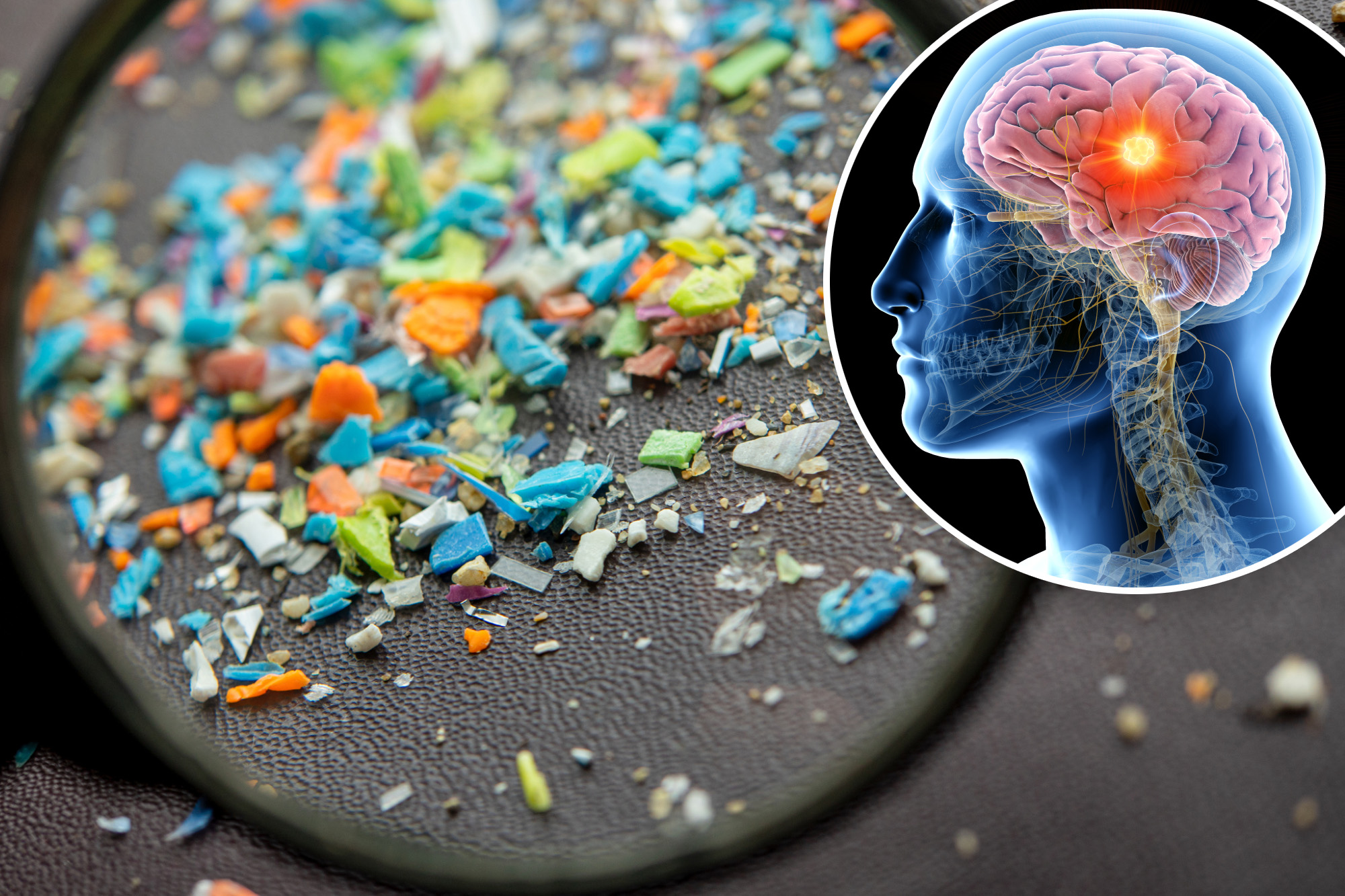
At the heels of a new shocking study that found that our brain contains about a microplastic spoon, experts say there are several ways to limit the exposure and consumption of these dangerous points.
Previous research suggested that people consume the value of a plastic credit card every week on average, and annoying particles – which are less than 5 millimeters long – are found in the oceans and clouds.
Microplastics have also been detected in different parts of the body, including lungs, liver, kidneys, placenta, blood, sperm and even breast milk, although the levels found in the brain are much higher than other organs or body fluids.
While the full health impact of microplastics remains unsafe, studies suggest that they can damage cells, cause inflammation, disrupt organ function, and change immune responses. Exposure to these small particles has also been associated with an increased risk of heart attack and stroke, as well as some cancers.
Tiny – and, experts say, very, very expensive. According to one study, the microplasty found in the food supply and the water of the US containing “permanently chemicals” are contributing to a quarter of a trillion dollar per year of health crisis.
Although microplastics may be almost impossible to avoid completely, experts say there are steps you can take to limit your exposure.
1. Do not drink from bottles with plastic water
According to industry data, bottled water was America’s favorite beverage last year, with 16.2 billion gallons consumed, a 2% increase from 2023.
And while hydration is a foundation stone of health, water packaging can sabotage it.
In a recent scientific work, doctors reported that transition from bottled water to filtered water can cut microplastic intake by about 90% – from 90,000 to 4,000 particles each year.
Microplastic exposure from plastic water bottles occurs when particles explode from the inner surface of the bottles and insert water, especially when the bottle is squeezed or exposed to heat.
Experts recommend using a bottle of reusable water of unchanged water steel filtered to reduce microplastic consumption.
2. Choose the right tea bags
A Canadian 2019 study found that the slope of a single plastic bag of tea at the temperature of creation – 203 degrees Fahrenheit – releases about 11.6 billion microplastics and 3.1 billion nanoplastic in each cup.
“We think it is a lot when compared to other microplastic foods,” researcher Nathalie Tufenkji told McGill University in Quebec for the young scientist. “The table salt, which has a relatively high microplastic content, has been reported to contain approximately 0.005 micrograms of gram salt. One cup of tea contains thousands of times more plastic mass, at 16 micrograms per cup.”
To avoid steep (targeted) health effects of consuming microplastics, experts recommend buying tea in paper bags or as loose sheets.
3. Boil and filter the tap water
In many crops, boiling water before drinking is an ancient and/or needed survival custom, and research suggests that when it comes to microplastics, intervention can be just as critical.
A 2024 study found that boiling water can save quickly and effectively Home drinking supplies of microplastics.
Researchers found that boiling water and faucet filtering can reduce the presence of microplastics (and nanoplasty) in nearly 90%water.
How does it work? As the water temperature rises, lime – that foam residue left in the water bins – interferes with plastic, absorbing them and removing them from the water.
Depending on how difficult or soft is the water supply, some plastic can also end up enclosed within the pieces of mineral deposits, which would then swim on the surface.
Over time, that crust can simply be cleaned clean. Otherwise, after boiling, the water can be filtered – through a household coffee filter, for example – to eliminate navigators, known as fraudsters.
Some home filtration systems can remove the unwanted gunk, but are relevant researchers, giving researchers finding more accessible ways to dramatically reduce microplastic consumption.
4. Do not use plastic cutting boards
Resarch has found plastic cutting boards to be a potentially serious source of microplastics in human nutrition. The research team theorized that those using the plastic cutting board are exposed to millions of plastic particles due to repeated knife stroke.
They estimated that, per year, using a polypropylene fragmentation board equated with the production of 49.5 g of microplastics when using a polyethylene fragmentation board equal to 7.4-50.7 g.
In addition to lowering exposure to microplastics, experts say boards for cutting wood and metals are more durable, durable and easier to clean
5. Never microwave plastic containers
Research has shown that microwave plastic food containers can emit a massive number of plastic particles – in some cases, more than 2 billion nanoplastic and 4 million microplastics per square centimeter of the container within 3 minutes of microwave heat.
Polyethylene -based food power released more particles than polypropylene -based plastic containers.
Researchers found that cooling and maintaining the room temperature of these containers over six months can also release millions in billions of microplastics and nanoplastic.
Recommendations for limiting microplastic exposure include non-storage of plastic-selection for glass or stainless steel containers-and restricting the consumption of canned foods and ultra processed.
#ways #reduce #microplasty #body
Image Source : nypost.com